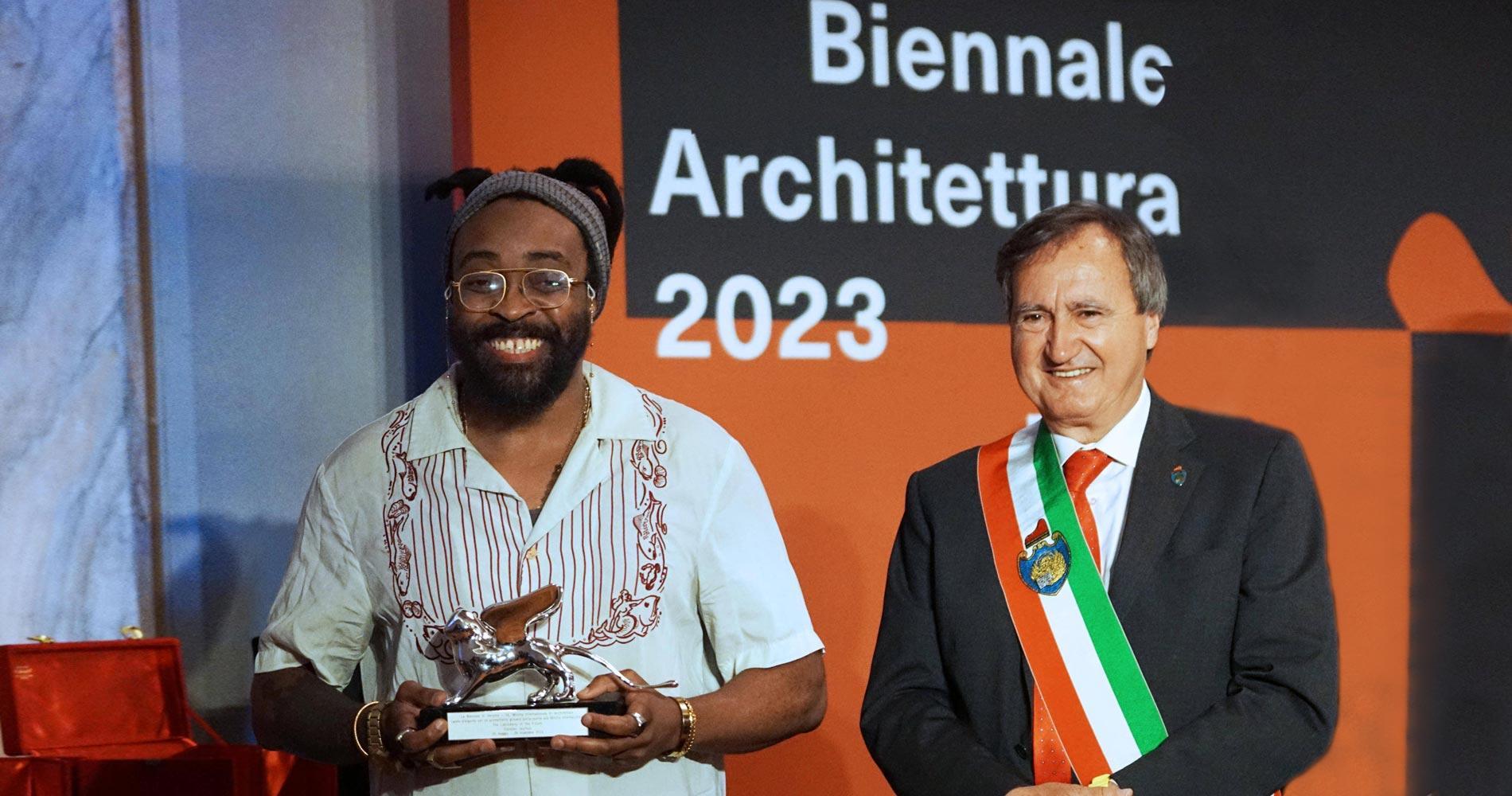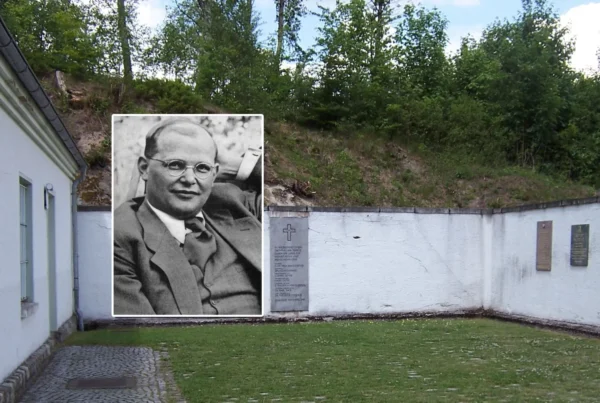Ambassador Christoph Thun-Hohenstein is the Director General for International Cultural Relations at the Austrian Federal Ministry for European and International Affairs. He shares impressions of the 2023 Architecture Biennale in Venice. African architects and their vision for the future stood at the center of this exhibition which has lived up to its reputation for being an agent of change representing a wide range of traditions and solution-oriented approaches for a global audience. The current Africa-focused Biennale is truly a global Biennale.
Christoph Thun-Hohenstein, 18 July 2023
Venice is always worth a trip, and my annual visit to the Venice Biennale has become indispensable. Nowhere else in the world can you learn so many exciting and clever things about our future within a few days as at the Venetian art and architecture biennials. In 2023, it’s architecture again and it’s one of the best biennials I’ve seen so far. The overarching theme is The Laboratory of the Future, but instead of seeing Silicon Valley visions, the focus lies on the continent with the world’s youngest population: Africa.
“For the first time ever, the spotlight has fallen on Africa and the African diaspora, that fluid and enmeshed culture of people of African descent that now straddles the globe,” the Artistic Director of the Architecture Biennale 2023 Lesley Lokko writes in her foreword to the Short Guide. She did not want a didactic biennial that would confirm directions, offer solutions, or deliver lessons. She conceived this Biennale “as a kind of rupture, an agent of change, where the exchange between participant, exhibit and visitor is not passive or predetermined. The exchange is intended as reciprocal, glorious and unpredictable in form, with each participant transformed by the encounter, and emboldened to go forward into another future.”
There could not be a better formulated guide to the two main exhibitions at this Biennale, but Lesley Lokko is not only an architect and university professor but also an acclaimed writer. Born in Dundee to a Ghanaian surgeon and a Scottish mother, she grew up between Scotland and Ghana. She was a professor of architecture in South Africa and Dean of the School of Architecture at the City College of New York and is founder and director of the African Futures Institute in Accra, Ghana.
It is likely that these geographical and content-related border crossings encouraged her to dedicate this Biennale to the challenges and potential of Africa for shaping the future. Her courage paid off: important cultural achievements in Africa are finally experiencing the global attention and recognition they deserve. And Lesley Lokko leaves no doubt that most of the solutions presented are not only relevant for Africa but also for our global common future. This is also reflected in the choice of the Nigerian artist, designer, architect, and master builder Demas Nwoko as the winner of the Golden Lion for Lifetime Achievement. In an article published in Wallpaper* magazine in 2022, he wrote: “If we had kept faith with how our ancestors did it, we would have reached a certain level with sensible management of natural resources for even the Western world to learn from. They’re using far too much energy for whatever they’re achieving.”
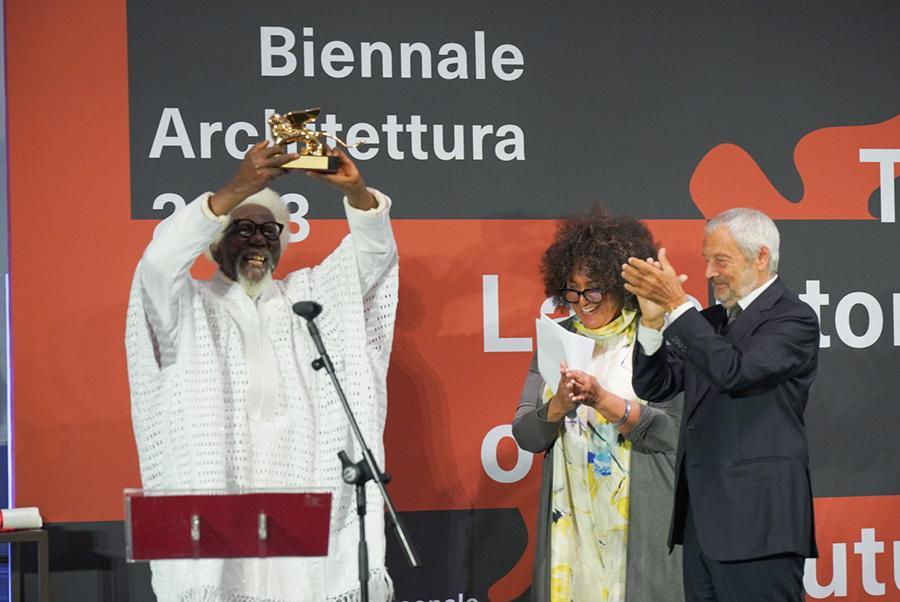
Demas Nwoko, Golden Lion Winner. Photo by Andrea Avezzù © Biennale di Venezia.
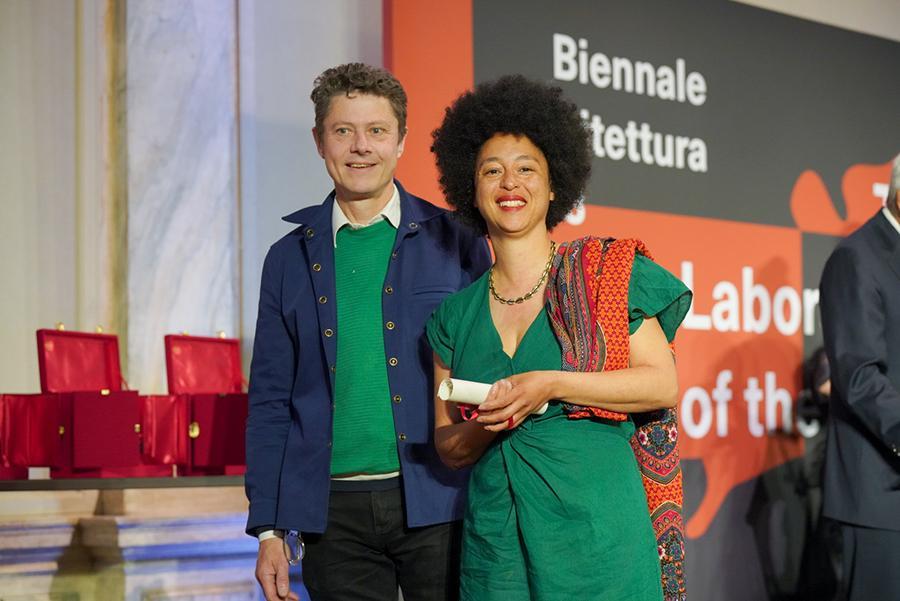 Wolff Architects, Golden Lion Winner. Photo by Andrea Avezzù © Biennale di Venezia.
Wolff Architects, Golden Lion Winner. Photo by Andrea Avezzù © Biennale di Venezia.
Lokko also emphasizes this relevance, which extends far beyond Africa, when she attests two central qualities to Nwoko’s buildings in Nigeria: “They are forerunners of the sustainable, resource-mindful and culturally authentic forms of expression now sweeping across the African continent – and the globe – and they point towards the future.” The fine exhibition of Nwoko’s work is one of the highlights of this Biennale for me.
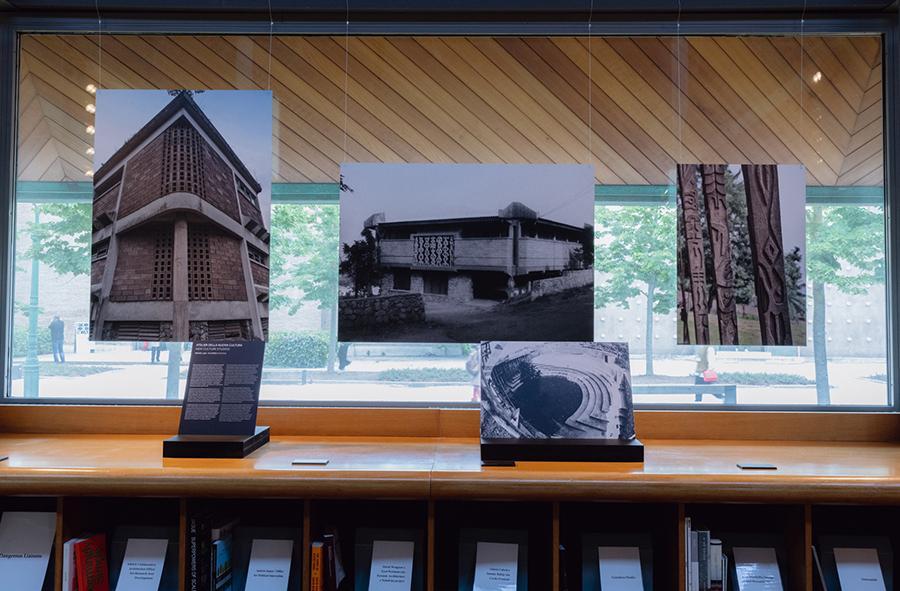 Demas Nwoko, Book-Pavilion.
Demas Nwoko, Book-Pavilion.
Photo by Matteo de Mayda © Biennale di Venezia.
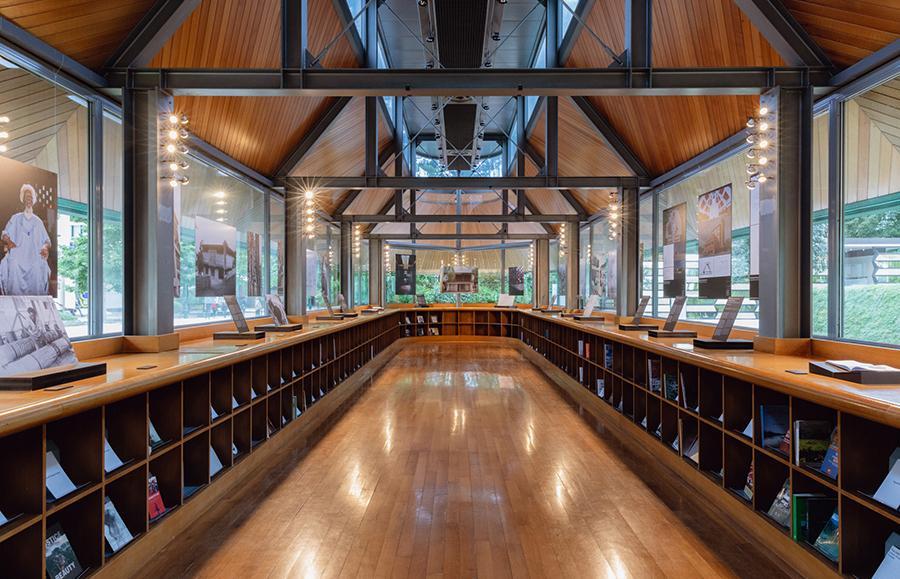 Demas Nwoko, Book-Pavilion.
Demas Nwoko, Book-Pavilion.
Photo by Matteo de Mayda © Biennale di Venezia.
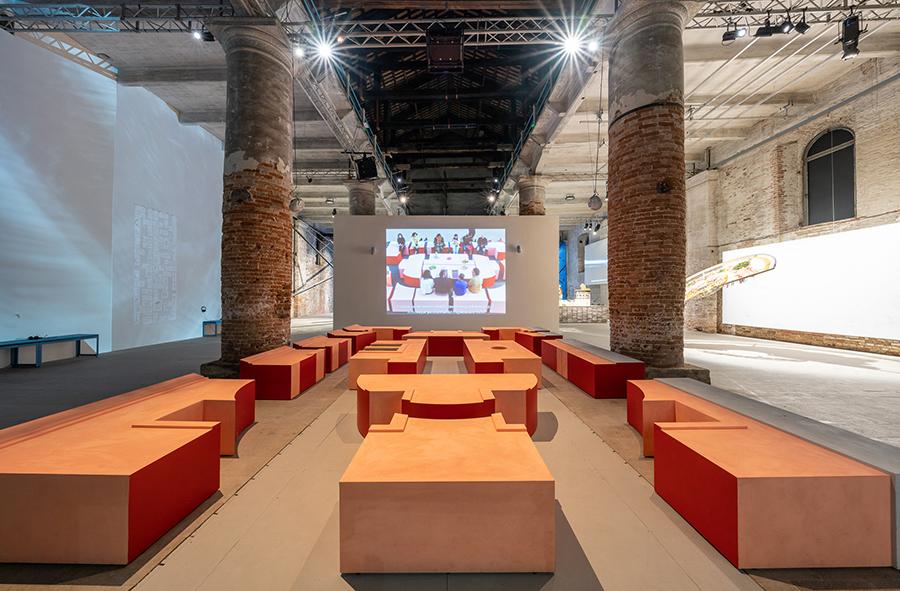 Alessandro Petti, Sandi Hilal.
Alessandro Petti, Sandi Hilal.
Photo by Andrea Avezzù © Biennale di Venezia.
Lokko skilfully knows how to use the Biennale to expand the history of architecture with previously little-known but all the more exciting narratives of African architecture. For her, the world history of architecture that has been told so far is not wrong but certainly incomplete. She is thus driving a development in architecture that has also dominated the visual arts in recent years, namely the opening of museum collections and exhibition practices, which are shaped by Western perspectives, to art and creativity from Africa and other non-Western continents. Lokko does this in an ingenious way by repeatedly letting it be known that this is not about competition between continents. What counts is the presentation of a wide range of traditions and solution-oriented approaches from which all countries in the world can benefit. In this sense, the current Africa-focused Biennale is a truly global Biennale.
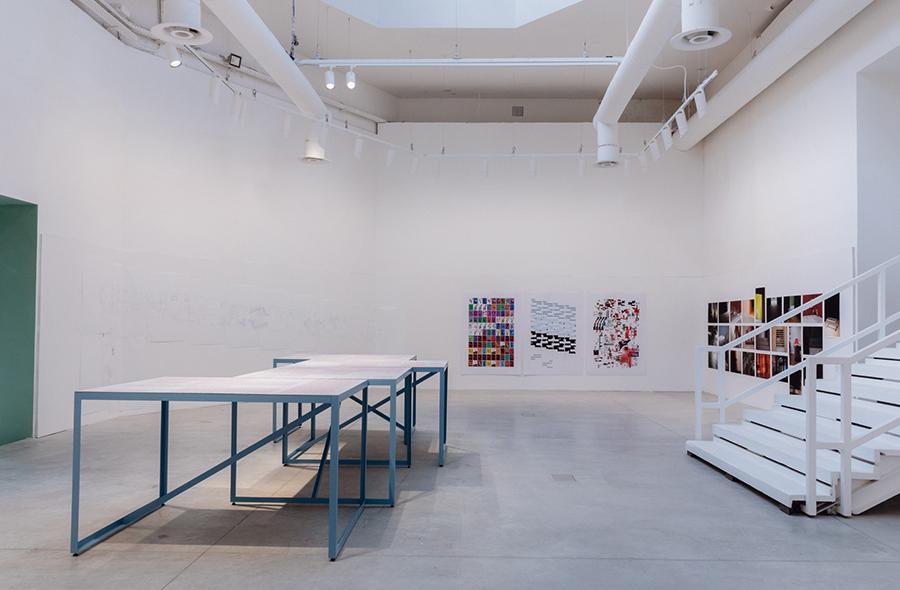 Archive of the Future.
Archive of the Future.
Photo by Matteo de Mayda © Biennale di Venezia.
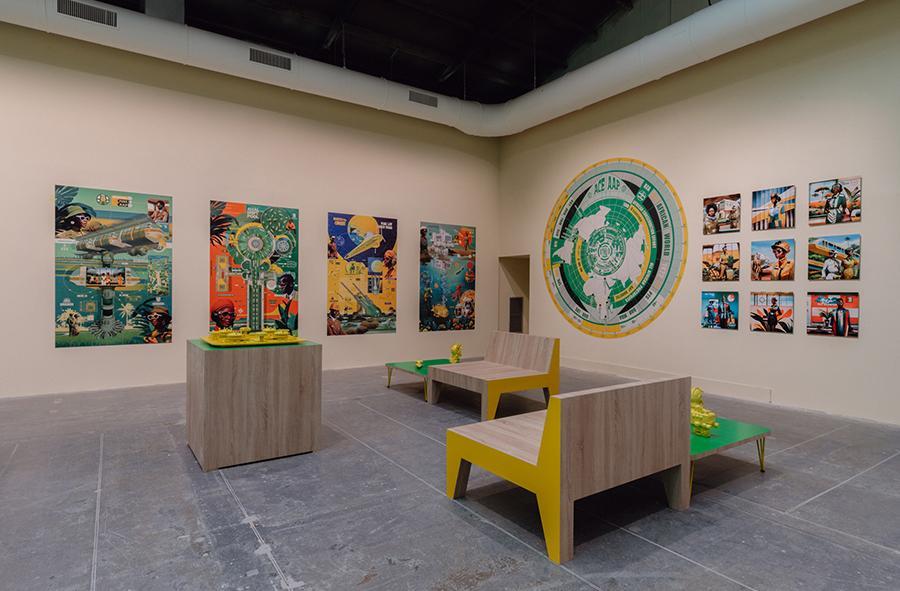 Olalekan Jeyifous.
Olalekan Jeyifous.
Photo by Matteo de Mayda © Biennale di Venezia.
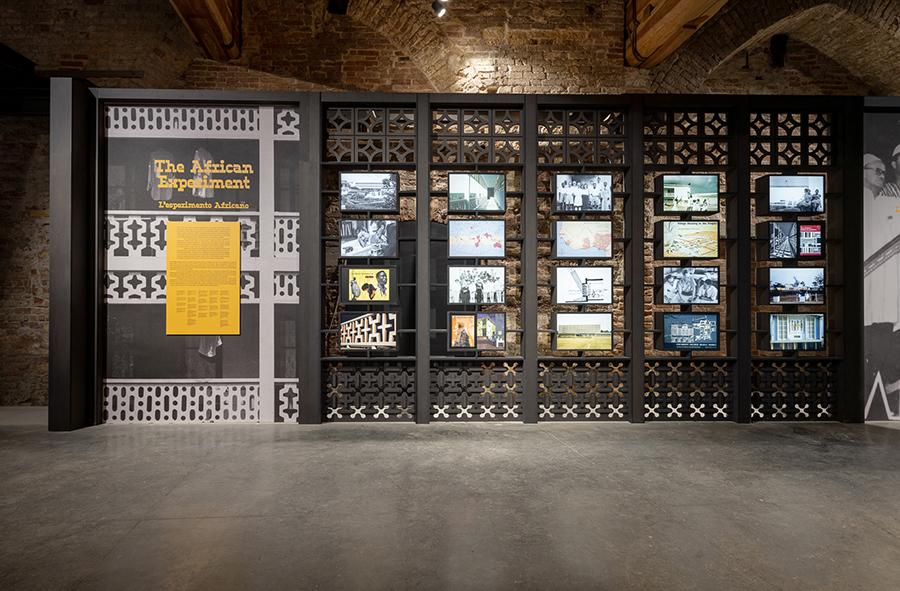 Tropical Modernism: Architecture and Power in West Africa. Christopher Turner (Lead Curator, V&A) 18th International Architecture Exhibition – La Biennale di Venezia, The laboratory of the Future. Photo by Andrea Avezzù © Biennale di Venezia.
Tropical Modernism: Architecture and Power in West Africa. Christopher Turner (Lead Curator, V&A) 18th International Architecture Exhibition – La Biennale di Venezia, The laboratory of the Future. Photo by Andrea Avezzù © Biennale di Venezia.
A particularly successful room is in the Central Pavilion: Nigerian-born, New York-based artist and designer Olalekan Jeyifous has created a futuristic space marrying green technologies and indigenous knowledge systems: a fantastic-looking installation on the “All-Africa Protoport,” a transport hub for low-impact, zero-emissions land, sea and air travel. After visiting this room, even those who do not really want to believe in Africa’s future relevance will recognize how important African impulses are and will be for shaping the future of human civilization.
This message seems to have reached most of the curators of the contributions in the National Pavilions: Rarely before at the Venice Architecture Biennales has there been such a coherent dialogue between national contributions and the focal points of the main exhibitions. It cannot be overemphasized: dialogue is a key concept in tackling the mega-challenges of our time. It takes the greatest possible diversity of creative ideas and the best possible team spirit in order to view them together and use them jointly to shape the future. This Venice Architecture Biennale impressively lives up to its claim of promoting agents of change.


